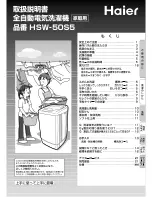
Page 6
The dishwasher requires lime free water for
optimum operation. The water supply in South
Africa varies considerably. Some users have
access to borehole water only, while others are
supplied from reservoirs or dams. Users in urban
areas would not normally require water softeners. It
is advisable therefore to test your water supply.
Check for white spots on glassware. If these
appear, the water used is too hard and requires
softening. Experience will soon show if softening is
required.
Water softener container
The dishwasher is equipped with a salt container
which automatically softens the water The container
needs to be filled with regenerating salts specially
developed for dishwashers. Small grained or
powdered salt is recommended. Do not use table
salt or edible salt as these contain insoluble
substances.
To fill the container proceed as follows:
•
Remove the lower basket to improve access.
•
Unscrew the lid of the salt container. (fig A-B)
•
If used for the first time, pour about 1 litre of
water into the container. (fig C) If the container
has water in it this step is not required.
•
Using the funnel supplied, add salt until the
container is full. (fig D) The container holds about
2 kg of salt.
•
Screw the lid back on until a “click” sound is
heard.
To prevent damage which may be caused by spilt
salt solution, we recommend you start a wash
programme immediately after filling the salt
container.
The low salt indicator light on the control panel will
glow when the salt needs replenishing.
Note:
The salt indicator may glow for some time after
filling the container This depends on the time it
takes to dissolve all of the added salt and may take
a few hours.
Adding water softener (dishwasher salt)
6







































